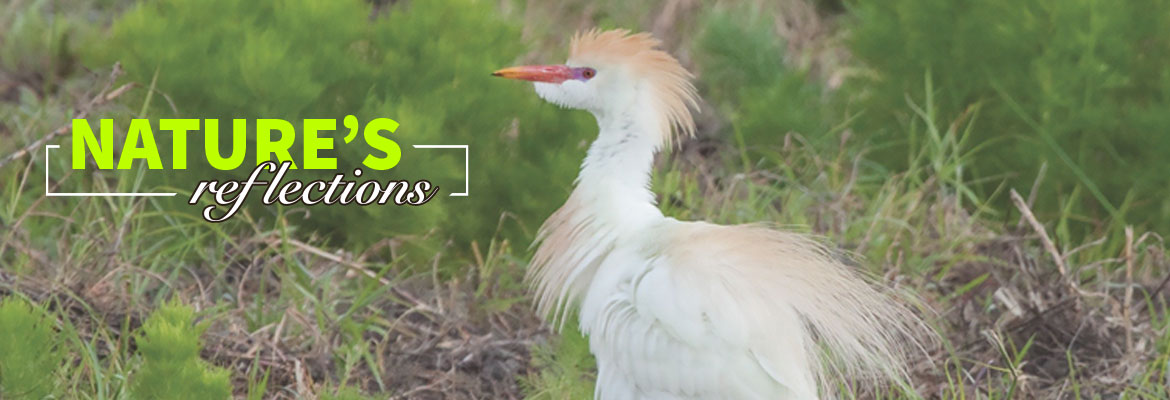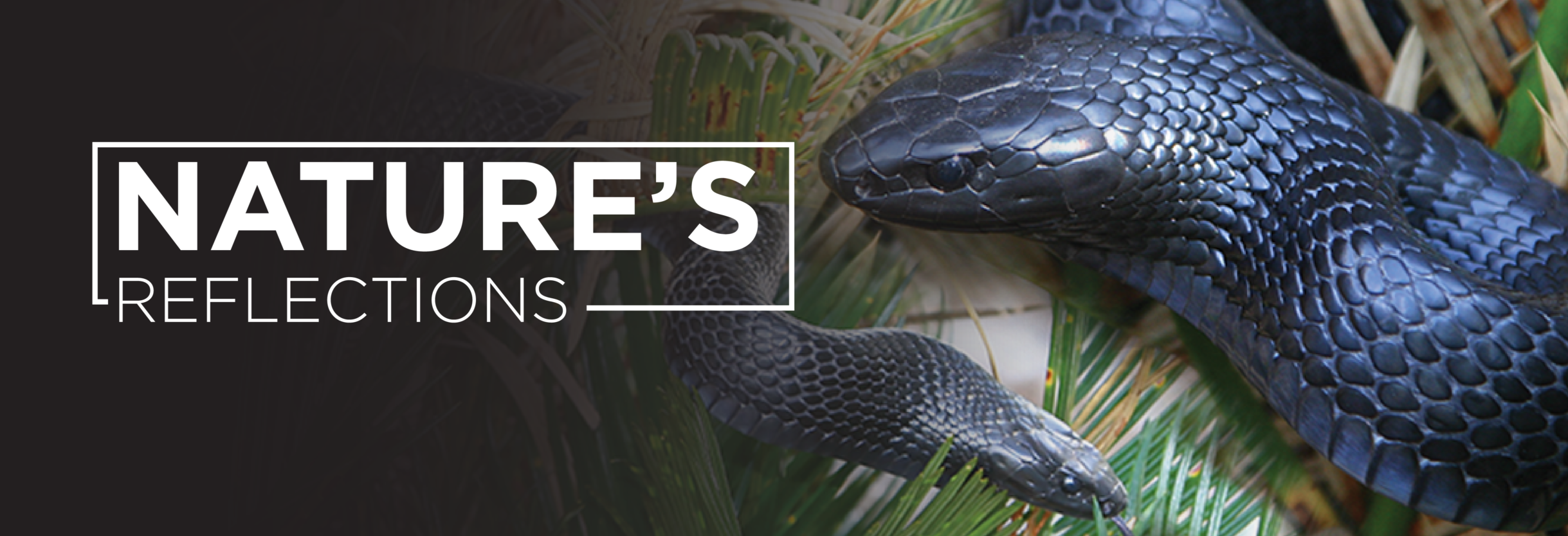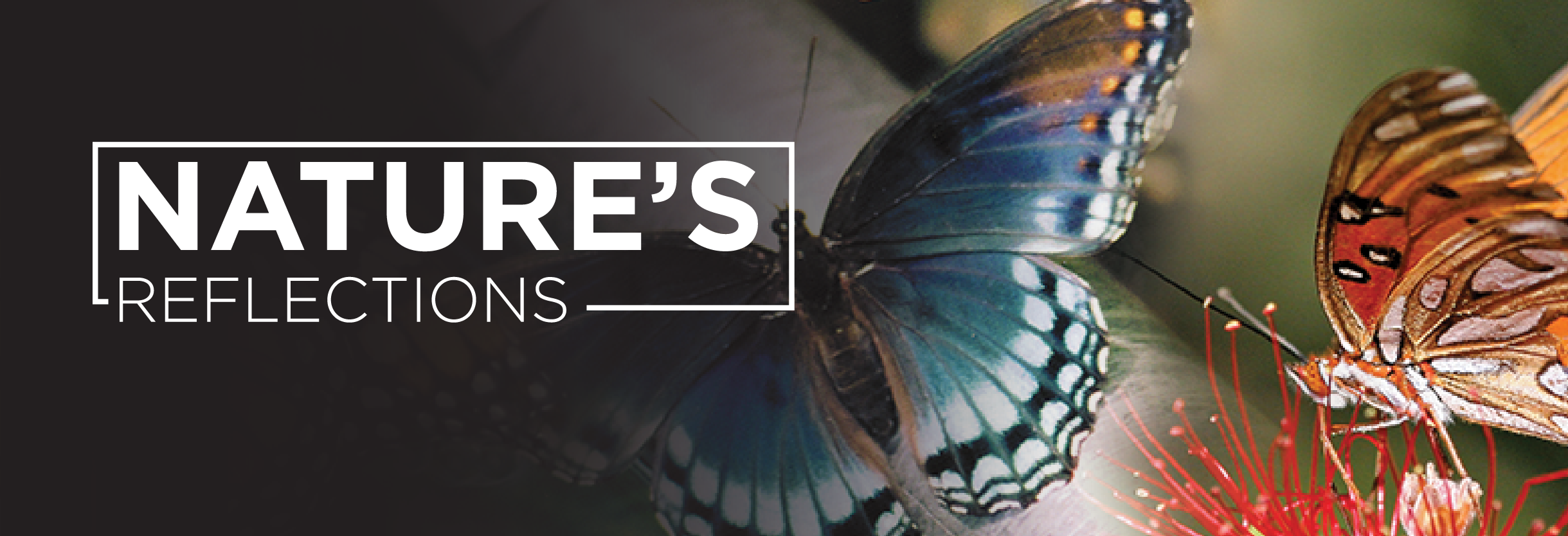Nature’s Reflections-Florida’s Cattle Egret
The Cattle Egret (Bubulcus ibis), native to Africa and Asia, is believed to have traveled across the Atlantic to South America in the late 1800s. From there, it migrated north to the US in the early 1940s. Over the next fifty years, it became one of the most prolific herons in all of North America. Today it is found in almost every state and on every continent except Antarctica. It is a year round resident of Florida.
The Cattle Egret generally lives in pastures and wetlands. During the breeding season, it seeks out woods near water, but generally remains far away from water. This small white heron is commonly seen in groups along roadsides and in pastures as constant companions to cattle. Often it is seen perched on the backs of cattle where it gobbles up the bugs, ticks and other parasites that plague livestock – their diet benefits cattle, ranchers, farmers and themselves. It is an opportunistic feeder and will travel great distances to follow a tractor plowing, or mowing a field to catch grasshoppers, crickets, spiders and moths that are stirred up by farm machinery.
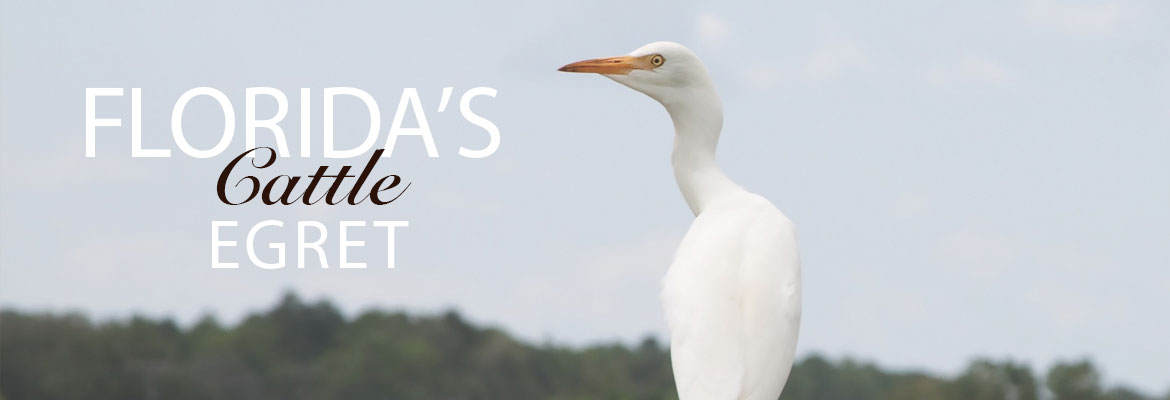
Both male and female are similar in appearance, standing eighteen to twenty-two inches tall with a three-foot wingspan. Coloration is generally white with a yellow bill and dark green legs. Breeding age begins at two to three years of age. During its twenty-day courtship, the bill and legs of breeding egrets turn a vivid red and display orange-buff colored plumes on the head and back. Non-breeding egrets remain white.
Cattle Egrets form colonies and prefer to roost and nest in trees near water. Males establish and defend a territory while the female lays two to six light blue-green eggs in a shallow, platform-like nest of twigs. Both parents incubate the eggs for twenty-one to twenty-four days. Down-covered young have dark legs and a black bill. The young leave the nest about three weeks after hatching and are on their own at six weeks.
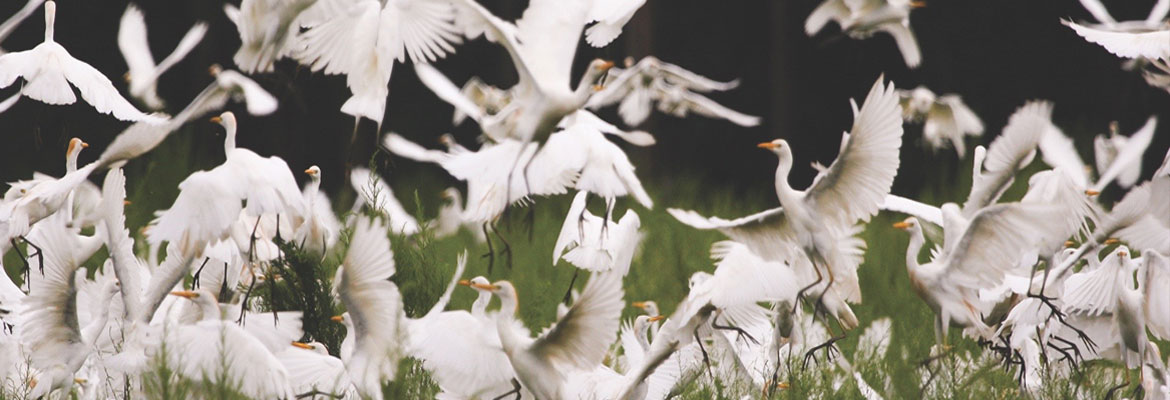
In captivity the Cattle Egret has been known to live more than ten years – lifespan in the wild is unknown.
Column and photo by Sandi Staton



